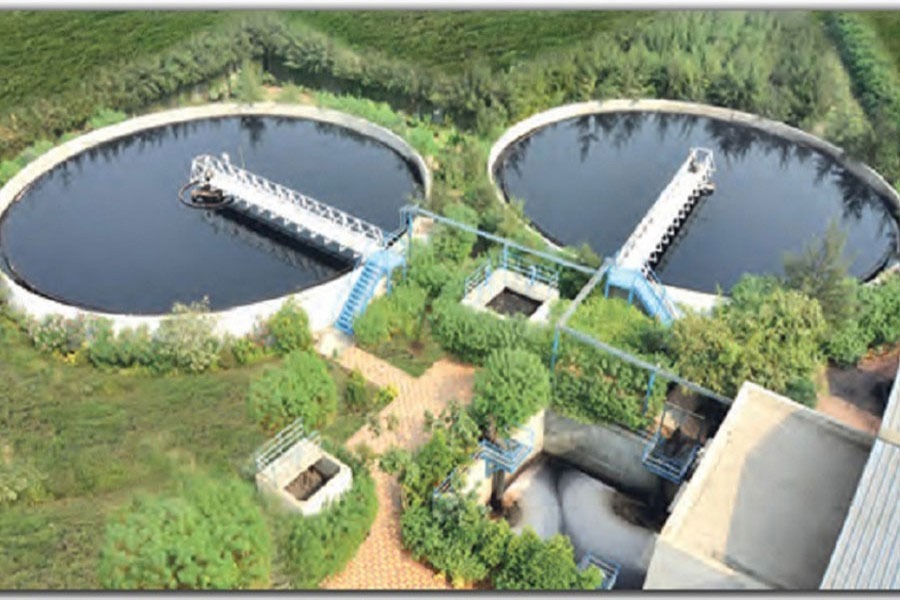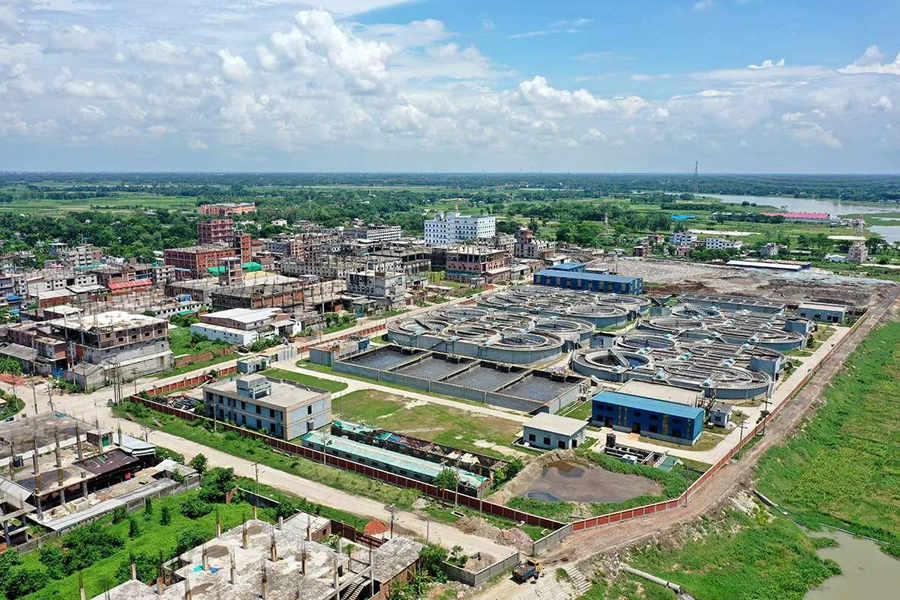Saif
Senior Member
- Joined
- Jan 24, 2024
- Messages
- 15,574
- Reaction score
- 7,889
- Nation

- Axis Group

Could you please move the above post to textile & RMG thread? ThanksPran-RFL’s Varendra Rajshahi Textile creates 2,000 jobs in just 6 months, aims for 12,000
The group revived a state-owned factory that had been closed for 22 years

Infograph: TBS
- -2,000 jobs created, 90% filled by local women
- -Factory exports shoes, bags to Europe and America
- -Tk350 crore investment planned, targeting 12,000 total jobs
- -Revived old textile mill closed for 22 years
- -Expansion includes garments, call center, and training facility
- -Vision: decentralized, sustainable industry creating rural employment
In just six months since launching operations, Varendra Rajshahi Textile Ltd, a new industrial venture by Pran-RFL Group, has created employment for 2,000 people, 90% of whom are women.
Located on 26 acres in Rajshahi's Naodapara area, the factory is currently producing around six lakh pairs of shoes and bags per month, with most of the products being exported to Europe, America, and other global markets.
Monthly sales from the factory are already reaching Tk20–25 crore, and the company has recently unveiled plans for major expansion.
According to company officials, the factory currently manufactures various types of shoes, luggage, and storage bags, with plans to expand into ready-made garments. The group, one of Bangladesh's largest conglomerates, also intends to establish a world-class call centre and a training facility within the premises.
Speaking to The Business Standard, Kamruzzaman Kamal, director (marketing) of Pran-RFL Group, said, "We have plans to invest Tk350 crore in this factory over the next two years. This will open up employment opportunities for around 12,000 people in the region."
The site, formerly home to the long-defunct Rajshahi Textile Mill, had remained idle for 22 years before Pran-RFL took over the land from Bangladesh Textile Mills Corporation (BTMC) under a public-private partnership.
Pran-RFL revived the site in December last year and began operations after renovating the factory's only remaining shed.
"We had to scrap most of the old machinery, which had become unusable over time," Kamruzzaman said. "Since the facility was originally set up for textile production, we had to install entirely new equipment suitable for manufacturing shoes and bags."
Kamruzzaman added that products from the factory range from affordable Tk100 sandals to premium shoes priced at Tk5,000. "Raw materials are sourced both locally and internationally, and the manufacturing is done in phases to meet the needs of both domestic and global customers."
Looking ahead, the company plans to start garment production and set up a modern telemarketing centre at the site, which will offer additional employment, especially for women.
Kamruzzaman said in addition to Barendra Rajshahi Textile Ltd, their products are also being manufactured in several other factories in Rajshahi, including some within the Bscic industrial area.
"Our goal is to create employment opportunities for the people of this region, and Pran-RFL Group is working towards that objective," he said. He added that everyone working in the factory is from Rajshahi, with 90% of them being women.
The factory currently employs 2,000 local workers, including many from marginalised backgrounds.
Shankari Rani, a resident of Godagari and a production worker at the factory, said her job has been a vital source of support for her family. "My husband is a blacksmith, but his earnings were not enough. Working here allows me to contribute to household expenses and support our two daughters," she said. "Our shifts run from 8am to 8pm, with a one-hour lunch break."
Naheda Akhter Nitu, a training executive at the factory, joined four and a half months ago. "I used to work in Dhaka, but my family wanted me to stay in Rajshahi. When this factory opened, I didn't hesitate to join."
To mark the milestone of 2,000 jobs created, PRAN-RFL Group held a celebration on Saturday titled "Celebrating 2,000 Jobs; Targeting 12,000" at the factory premises. Brig Gen (retd) Dr M Sakhawat Hossain, adviser to the Ministry of Labour and Employment, attended the event as chief guest.
Also present were Labour Secretary AHM Shafiquzzaman, Pran-RFL Chairman and CEO Ahsan Khan Chowdhury, Rajshahi Superintendent of Police Farzana Islam, and BTMC Manager Nurul Alam, among other officials.
"This initiative by Pran-RFL is a remarkable step forward," said Sakhawat Hossain. "Reviving a state-owned factory that had been closed for 22 years and generating 2,000 jobs in such a short time is truly praiseworthy. This is not just an industrial revival – it marks the beginning of a socio-economic transformation."
"While many people from rural areas are forced to migrate to cities due to a lack of local job opportunities, Pran-RFL is showing how regional industrialisation can create sustainable employment," he added.
Ahsan Khan Chowdhury, chairman and CEO of Pran-RFL Group, said, "Our vision is big. We believe the days of having to move to Dhaka for work are coming to an end.
"Instead, in the future, we aim to go to remote areas, set up industries, and offer people jobs right where they live. We are investing in labour-intensive industries in Rajshahi and are successfully creating a large number of employment opportunities."
He further noted that the facility will be developed into a fully sustainable green industrial park, with all products aimed at export markets.
"We are working on creating more employment opportunities for women through ventures like telemarketing centres," he said.





































